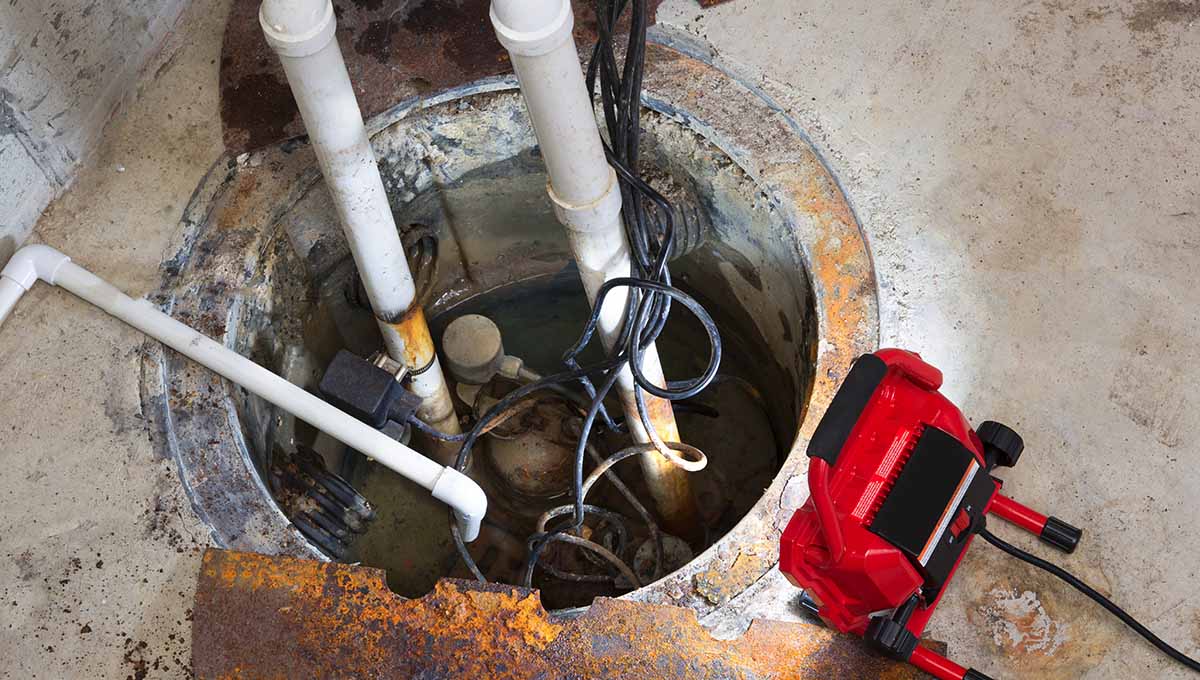5 Common Reasons Why Your Sump Pump Stopped Working
Power Failure or Electrical Issues
One of the most common reasons why a sump pump stopped working is a power failure or electrical issues. Without power, the pump cannot function properly. To address this, check if the power cord is securely plugged in and if there are any tripped circuit breakers or blown fuses. Consider using a backup power source like a battery backup or generator to ensure operation during power outages. Regularly test the sump pump to ensure it receives power and functions correctly.
Float Switch Problems
Another common reason why your sump pump stopped working is issues with the float switch. The float switch activates the pump when the water level rises. Troubleshoot by checking for debris or obstructions around the float switch and adjusting its position if necessary. If the float switch is damaged, consider replacing it.
Clogged or Frozen Discharge Pipe
A clogged or frozen discharge pipe can also cause your sump pump to stop working. The discharge pipe carries water away from your home, and blockages prevent proper water discharge. To resolve this, check for visible clogs or obstructions in the pipe and try to clear them using a plumber's snake or warm water. If necessary, seek professional assistance.
Overwhelmed Pump Capacity
If the amount of water exceeds your sump pump's capacity, it may lead to failure, especially during heavy rainstorms or sudden water influx. To prevent this, ensure your sump pump is properly sized for your needs and consider upgrading to a larger capacity pump if required. Regular maintenance and inspections can help identify potential issues before pump failure occurs.
Pump Age and Wear
Over time, sump pumps experience wear and tear, affecting their performance. Components like the motor, impeller, and float switch can wear out or become damaged. Regularly inspect and maintain your sump pump to ensure all parts are in good working condition. If you notice signs of wear or your pump nears its expected lifespan, consider replacing it to avoid unexpected failure.
What To Do When Your Sump Pump Stopped Working
Check the Power Source
Power outages are a common cause why your sump pump stopped working. Ensure your pump is getting power by checking the power cord, fuses, and circuits. Consider a backup battery sump pump system for added protection.
Check for Debris in the Sump Pit
Clogs and jams can cause sump pump failure. Open the pump lid and inspect the pit for debris. Remove any obstructions found.
Look for Leaks in the Discharge Pipe
Visually inspect the discharge pipe for leaks. Repair any leaks to prevent water backup into the basement.
Check for a Malfunctioning Float
Fill the sump pit with water to check the float's functionality. If it doesn't start the pump, consider replacing the float.
Clear the Weep Hole
Locate the weep hole and carefully clear it of any clogs. Be cautious not to break anything off into the hole.
Check the Impeller
Clean or replace the impeller to resolve pump issues caused by clogs.
Seek Professional Inspection
Consider a professional sump pump inspection for a thorough check and maintenance before the heavy rain season arrives. Professional plumbers can address issues and ensure your sump pump operates efficiently.
How to Reset a Sump Pump in 5 Steps
Resetting your sump pump is a simple process that can address various issues. Follow these steps:
Disconnect the Power
Before working on the pump, disconnect it from the power source to avoid electrical hazards. Turn off the sump pump switch and unplug it from the outlet. You can also shut off the power at the electrical breaker for extra safety.
Take the Sump Pump Out of the Basin
Remove the sump pump from the pit or basin to access its components. Take pictures of the pump's connections for reference before disassembling. Place the pump on a towel or tarp to catch any excess water.
Clean Out the Sump Pump
Clear any debris or blockages in the pump that could cause failure. Check the exterior for rust or damage that might lead to leaks. Ensure the drain lines and discharge pipes are clear as well.
Return the Sump Pump to the Basin and Restart the Power
Put the pump back in the basin, reconnect everything properly, and ensure the float switch rises and falls with the water level. Plug in the pump and switch it on. If you shut off the power at the breaker, turn it back on too.
Reset the Sump Pump
If your sump pump has a reset button, use it. If not, unplugging it and plugging it back in will cycle the motor. Resetting may resolve many problems, but if issues persist, call a licensed plumber for further assessment.
Conclusion
Sump pump failure can be caused by various factors, but many issues can be addressed with simple troubleshooting and maintenance. Regularly inspecting and maintaining your sump pump can help avoid unexpected failures and ensure your basement stays dry, protecting your home from water damage. If you encounter persistent problems, seek professional assistance to resolve the issue effectively.





